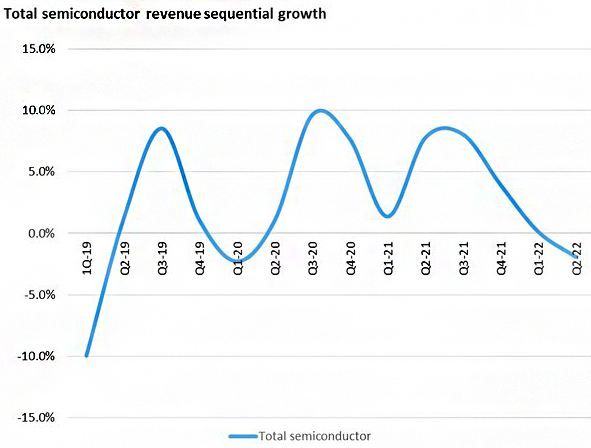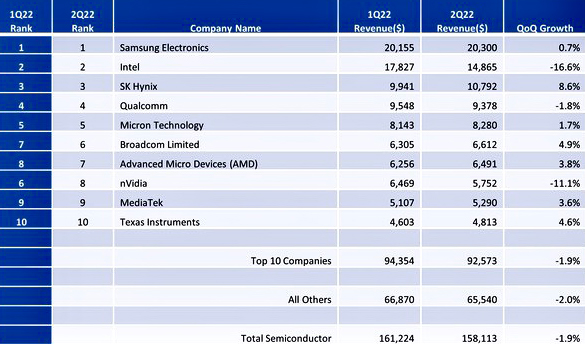The
semiconductor market revenue in the second quarter of 2022 was US$158.1
billion, down 1.9% from the first quarter of 2022. Prior to this, the
semiconductor industry has grown for eight consecutive quarters, the longest
streak on record.

The combined influence of
multiple factors dragged down the Q2 market
Cliff Leimbach, senior Research analyst at Omdia, said: ‘Semiconductor
market revenue declined in the second quarter of 2022, making it the third-worst
second quarter performance in the 20 years Omdia has tracked the market. Given
the cyclical nature of the semiconductor market, we expect the market to return
to normal after the first half of 2023.’
One factor contributing to the current decline in the
semiconductor market is Intel's second-quarter 2022 results and a 13% decline
in the company's microprocessor (MPU) business in the first quarter. The size
of the MPU market accounts for more than 10% of the entire semiconductor
market, so the sharp decline in this market has dragged down the overall market
performance.
In addition, companies reporting revenue in other
currencies saw revenue decline when converting data to U.S. dollars, as the
U.S. dollar began to strengthen in the second quarter of 2022. The combination
of these factors has had a downward impact on the total semiconductor market
revenue in dollar terms.

Top 10 manufacturers: only
two have double-digit revenue declines
Among the top 10 semiconductor companies, Intel and Nvidia
have combined to reduce revenue by $3.7 billion in the second quarter of 2022. This
is due to weak consumer demand and lower inventory levels by OEMs amid an
uncertain outlook. Apart from these two companies, only Qualcomm and
NVIDIA experienced a revenue decline in the second quarter among the top 10
semiconductor companies, and the rest of the companies saw revenue growth in
the quarter.
For the memory market, there was a slight increase in the
second quarter, up just over 1%. As the world's largest DRAM and NAND
manufacturer, Samsung Electronics' second-quarter semiconductor sales reached
$20.3 billion, an increase of $145 million from the first quarter, under the
combined force of memory market growth and Intel's declining performance. Omdia
attributed the increase to continued demand for server semiconductors and
higher system semiconductor (non-memory) sales.
Samsung Electronics' market share rose 0.3 percentage
points to 12.8 percent of 12.5 percent, expanding its lead over Intel to 3.4 percentage
points. However, this South Korean semiconductor giant may lose its lead in the
second half as the memory semiconductor market is entering a recession.
Intel's
second-quarter revenue was $14.865 billion, down 16.6% from the first quarter.
Intel posted a net loss of $454 million in the second quarter due to a slowdown
in PC demand due to the economic downturn and supply chain disruptions.
This article refers to the comprehensive report of "International Electronic Business".




